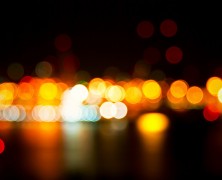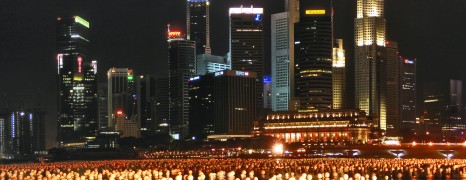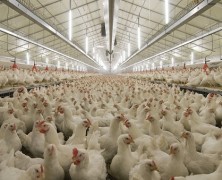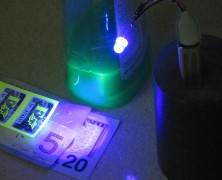LED lights are commonly discussed in the news today, for a variety of different reasons. Above all, there’s a great deal of emphasis on the fact that they’re considered “energy efficient”. But what does this mean exactly, and is it really the case? For a better understanding of this important topic, here are the top 4 reasons why LED lights are energy efficient, making them the best choice for residential, commercial and industrial applications. Lots of Light and Little Heat LEDs use only a fraction of the energy used by CFLs or incandescents to produce the same amount of light. For example, the standard 40 watt incandescent bulb produces 400 to 500 lumens (a measurement of light brightness). To produce this light with CFLs, you would need to use 8 to 12 watts. LEDs are simply more efficient; Flexfire LEDs’ UltraBright strip lights, for example, each foot of reel produces 400 to 670 lumens for just 4.4 to 7.5 watts. The reason for this is that the vast majority of energy that goes into LED lights is transferred into light. When properly engineered, many LED lights operate near 80% efficiency. That means 80% of the energy used becomes light. Incandescent bulbs on the other hand, work at just 20% efficiency, meaning that 80% of the energy used is transferred into heat—instead of light. The U.S. Energy Information Administration estimates that 17% of the total energy used by the United States’ commercial and residential sectors in 2012 went to lighting. That means switching to more efficient LEDs could have a dramatic impact on the country’s energy consumption. Longer Lasting When a light bulb goes dead, it costs energy to replace it. First, a factory must use energy to build its replacement. Then more energy is used...
Wearable Blue LED Light Therapy To Treat Psoriasis Vulgaris...
posted by Flexfire LEDs
Philips has announced the release of a wearable device that uses blue LED light to manage mild to moderate cases of psoriasis vulgaris. The device, which will be available through distributors this month in Germany, Netherlands and the U.K., is called Philips BlueControl and will offer an effective form of treatment for the skin condition without requiring medication. Psoriasis is a skin condition that effects 125 million people across the planet. Of those suffering from the condition, 80% have the most common form, psoriasis vulgaris. Also known as plaque psoriasis, the condition causes plaques on the skin in the form of red raised skin and flakey “scales” that arise when the skin cells die. Symptoms of the condition include itching, pain and cracking. Needless to say, the physical and psychological effects can be debilitating for those patients suffering from this disease. While the precise causes of psoriasis are unknown, it’s generally accepted that the condition arises following damage to the immune system, enzymes and other materials, which leads to uncontrollable growth of keratinocytes (immature skin cells that produce keratin, a tough protein found in nails, hair and skin) that triggers the skin flakes and inflammation as the body works to rid itself of the growth. Existing treatments to reduce the symptoms of the condition include topical applications, prescription drugs and UV phototheraphy—a treatment which taxes patients and medical services by requiring frequent visits to doctors’ offices. Looking for a better way to treat this incurable condition, researchers have found simple LED blue light treatment slows rapid cell division and can also reduce inflammation, which are the root causes of psoriasis vulgarsis. Conducting clinical trials in Germany, Philips worked with researchers at the University Hospital of Aachen to investigate the safety and efficacy of the Philips BlueControl device to manage...
The Future Of LED Lighting: A Brave New World
posted by Flexfire LEDs
What’s the biggest difference between LEDs and other forms of lighting systems? Is it that they’re 85% more efficient than incandescent bulbs? Or that they last thousands of hours longer than CFLs? While there are obvious benefits, according to Fast Company, the most revolutionary component of LEDs is likely to be their ability to recognize digital signals. For the first time, our lighting systems are going from analog to digital. No longer do lights just turn “off” or “on.” Now they can be “tuned” to emit any color of the rainbow, or change temperature and brightness, all from the touch of a finger on your smartphone app. We’re now staring at the future of LED lighting, and it’s a beautiful, brave new world. Since 2007, the U.S. has been effectively phasing out inefficient incandescent lighting through federal regulations enacted in the Energy Independence and Security Act. After starting out with an effective ban on 100-watt incandescent bulbs in 2012, followed by 75-watt bulbs in 2013 and 60- and 40-watt in 2014, LEDs have been the industry favorite as a replacement for Edison’s monumental invention over a century ago. One of the first reasons that LEDs took off instead of efficient but sterile CFLs is that they contain solid-state lighting (SSL) semiconductors. It was just twenty years ago Nichia’s Shuji Nakamura invented the blue LED in Japan. By covering the blue light in phosphorous coating, the industry was soon able to introduce a white LED light onto the market. While the first generation of LED lighting failed to outperform traditional lighting sources in performance and pricing, the predictable improvement curve of SSL has led prices to fall dramatically as product research and investment has skyrocketed. By 2013, Cree had released a LED bulb that looked and felt like a 60-watt incandescent, priced at under $14. By 2014, the LED lighting market is estimated at $17.4 billion and is predicted for rapid growth through 2020. The current rise can be explained mostly by LED technology’s superior durability, efficiency and performance in comparison to other lighting technologies. Further, the emergence of home automation and the “Internet of Things” will only serve to catapult LEDs to deeper and deeper market penetration rates. Here are benefits that digital networks and intelligent home automation systems hold for the future of LED lighting and human well-being. Health Benefits: “You have to start thinking of light as a drug,” said Terry K. McGowan, the director of engineering for the American Lighting Association, in an interview with nytimes.com. That means that we have to start recognizing the impact lighting has on our mental and emotional states. As artists have known for a long time, color affects our moods and can elicit emotional and physiological responses. For example, blue wavelengths in light — which LEDs are rich in due to their reliance on blue lights — have been shown to help us stay awake. Furthermore, LED lights can be programmed to follow the natural light rhythms of sunlight. This will increase human well-being by maximizing the efficiency of our circadian rhythms to indoor lighting, increasing focus, energy and fighting insomnia and depression disorders. Installed at work, automated LEDs will be able to increase worker productivity. Installed in the bedroom, automated LEDs will be able to help us fall asleep and wake up on time. Not only that, but LEDs are an amazing tool for indoor gardening, which help people, even those living in poor growing climates, to produce their own organic food and plants. Energy Efficiency Benefits: LEDs are already 80% more efficient that incandescents and a good 20% to 30% more efficient than most CFL options. But the efficiency of the technology doesn’t end at the individual diode. LEDs are much better than CFLs for home automation systems due to the advanced control options and rapid response switching and dimming. Using home automation systems, LED lights can be programmed to turn off or dim down...
The Benefits Of Poultry LED Lighting...
posted by Flexfire LEDs
Chickens raised using an intelligent poultry LED lighting system have been found to produce higher quantity and quality of eggs, develop into maturity at a faster rate and enjoy an improved standard of health as compared to chickens raised under traditional light sources. Using LED-based technology chicken farmers can: Lower lighting costs Increase musculoskeletal development and weight gain Induce earlier maturity for hens destined to lay eggs Increase egg output and quality Regulate reproduction cycles Increase length of reproductive life Furthermore, farmers can adjust the color of the LED lights to promote certain outcomes. For example, using red light, farmers were able to stimulate sexual activity and reduce the amount of feed necessary to produce each egg — even though there was no difference in the size, or quality of the egg. The red LED lights were able to increase egg production by up to 38 per hen while decreasing food consumption by 20 percent. Green lights promotes chicken growth at early stages of development, while blue light promotes growth later along the life cycle of the chicken. Blue and green light improved feed conversion (the efficiency at which an animal converts animal feed into desired output such as eggs or meat) by up to 4%, and therefore reduced cost per pound of the chicken by up to 3%. Why is Poultry LED Lighting Superior to Traditional Poultry Lighting? Visible “white” light is actually composed of a range of colors, which can be viewed by refracting light through a dispersive prism. Incandescents, the most common form of poultry barn lighting, are missing many critical portions of the full spectrum found in sunlight. For instance, an incandescent bulb produces a highly diminished amount of both greens and blues. CFLs produce only narrow bands of color in...
What Are The Uses For UV LED Light?...
posted by Flexfire LEDs
Until relatively recently there was no such thing as a commercially available ultraviolet (UV) LED light. But as LED technology continues to develop and power densities increase, UV LED lights are expanding into the market and replacing more traditional alternatives. Ultraviolet (UV) light is an invisible form of electromagnetic energy (light energy) that travels at a higher frequency and carries more energy than visible light. UV lightwaves were originally called “chemical rays” when first discovered in the 19th century because of their ability to cause certain substances to change at the molecular level. Here are a few examples of the many applications for UV LED lighting: Industrial and Cosmetic Curing UV curing is a process that uses UV light to instantly cure (or “dry”) inks, coating and adhesives through cross-polymerization of photosensitive materials. UV LED technology is emerging as an ozone gas- and mercury-free option for chemical curing with both industrial and cosmetic applications. Nail polish cures have traditionally been done using unregulated UV lamps, but controversy arose earlier this year over a study published in the Journal of the American Academy of Dermatology which reported a potential danger of skin cancer. The study found that LED lamps were much safer for this application, due to the lower frequency of UV light they emit. Analytic Tools Due to UV lighting’s ability to make certain materials visible to the human eye, it has been used for quite some time as an analytic tool. One common use for ultraviolet light sources is checking UV watermarks to validate currency, or identifying bodily fluids in forensic crime scenes. Scientific and Biological A 2012 study published in Applied Entomology and Zoology showed that UV LED lights were an effective method for dealing with the West Indian sweet potato weevil. This disagreeable insect...










